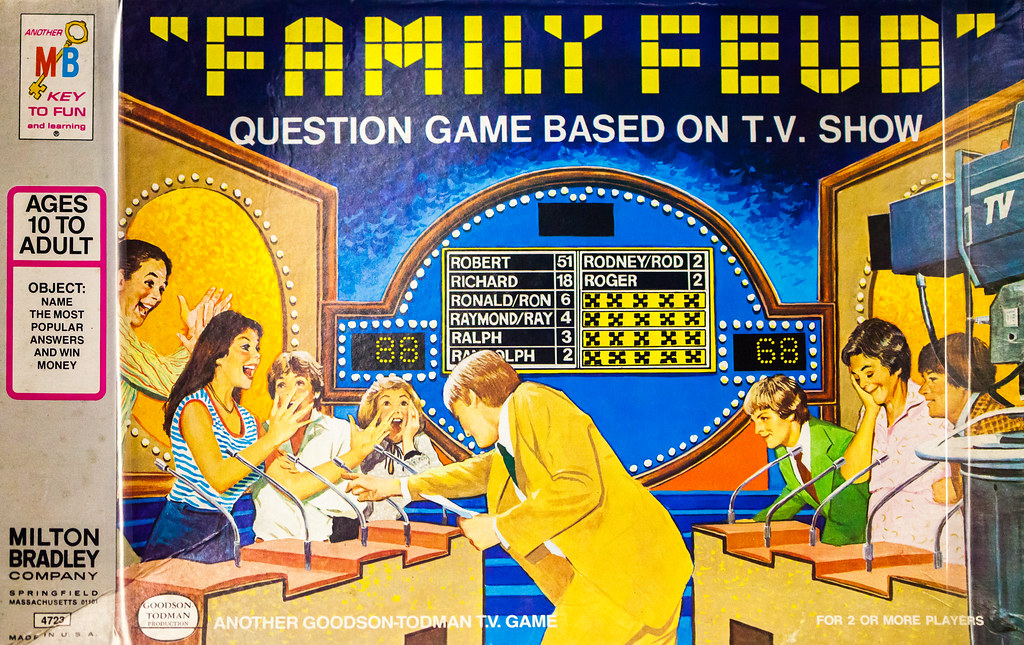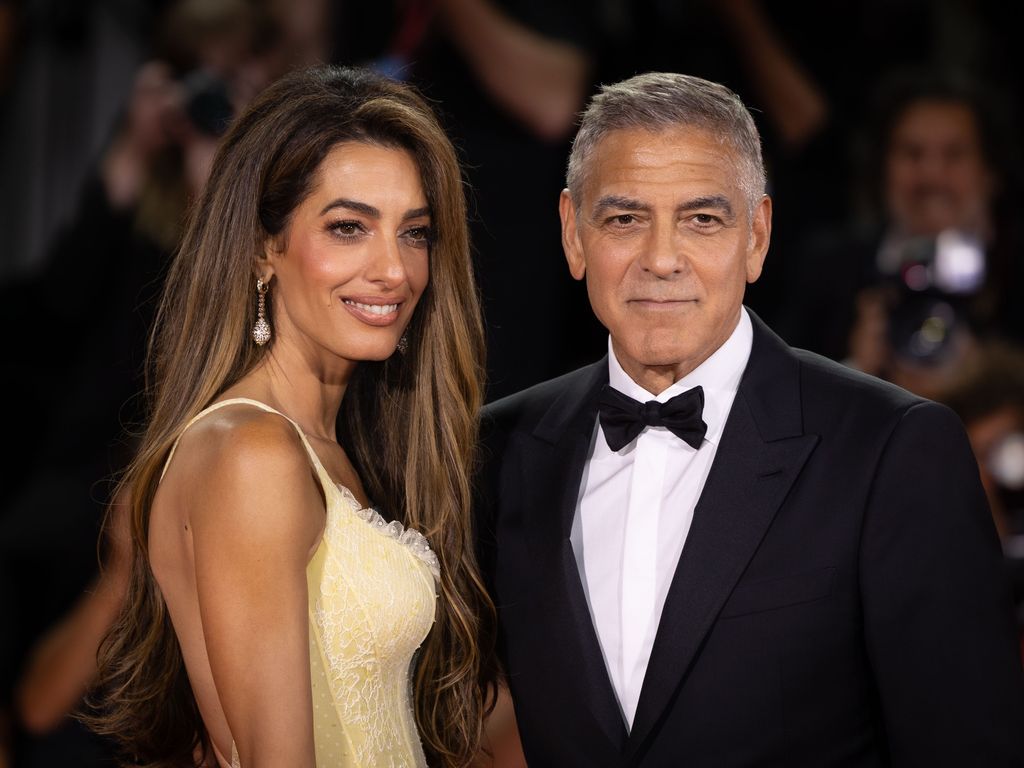
Bruce Springsteen, affectionately known as “The Boss,” has long stood as an unwavering pillar in the landscape of American rock and roll. His prolific career, spanning over half a century, is a testament to his profound songwriting, electrifying stage presence, and an unwavering commitment to narrating the experiences of the working-class American. From the gritty clubs of the Jersey Shore to sold-out arenas worldwide, Springsteen has cultivated a legacy built on authenticity, poeticism, and an extraordinary connection with his audience.
His journey is more than just a chronological list of albums and tours; it is a rich tapestry woven with tales of perseverance, artistic evolution, and profound social commentary. Each era of his musical output reflects not only his personal growth but also the shifting tides of American culture and consciousness. It is a narrative steeped in the pursuit of musical integrity and the relentless exploration of the human condition.
This comprehensive overview seeks to illuminate the key chapters of Springsteen’s remarkable career, examining the pivotal moments and artistic achievements that have cemented his status as a global icon. We will delve into the influences that shaped his early sound, the struggles that forged his distinctive voice, and the monumental breakthroughs that propelled him into the pantheon of rock and roll legends. The first segment of this retrospective will trace his path from aspiring musician to the cusp of international renown, setting the stage for his enduring impact.
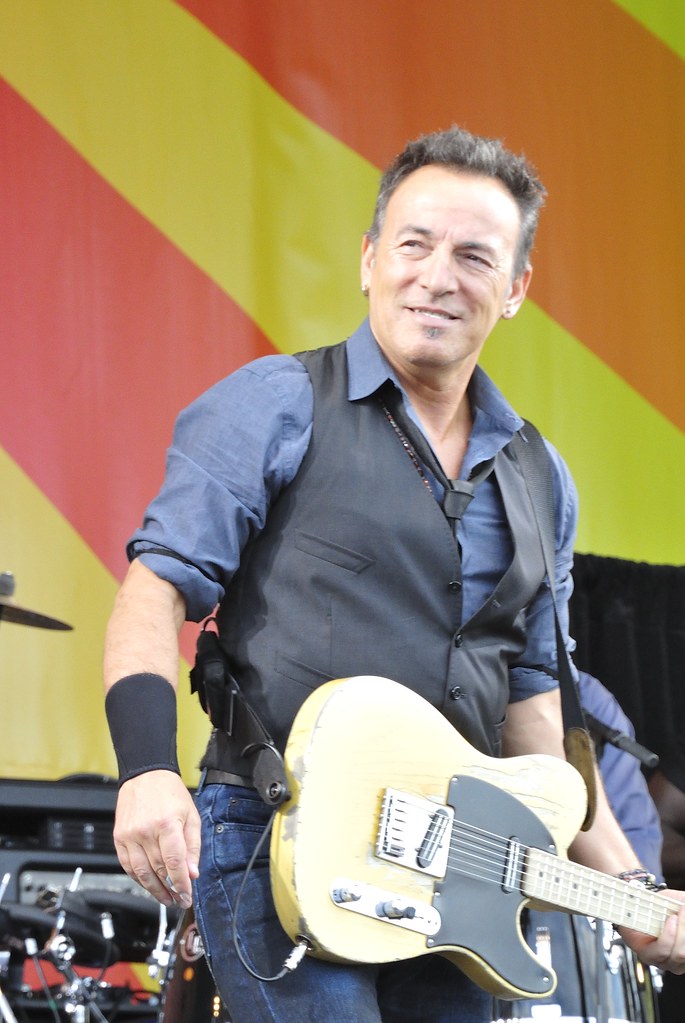
1. **Early Career: The Genesis of a Legend (1964–1972)**The formative years of Bruce Springsteen’s musical journey were irrevocably shaped by a single, pivotal television event. In 1964, witnessing the Beatles’ groundbreaking appearances on The Ed Sullivan Show ignited a spark within the young Springsteen. This moment of inspiration led him to purchase his first guitar for $18.95 from a Western Auto appliance store, a modest beginning for an artist whose instrument would become an extension of his voice.
Early on, Springsteen honed his nascent talents by playing for local audiences with a band known as the Rogues, performing in venues such as the Elks Lodge in Freehold. His dedication was further affirmed when, in 1965, his mother secured a loan to purchase him a $60 Kent guitar, an act of familial support he later immortalized in his poignant song, “The Wish.” These early experiences laid the groundwork for his developing artistry and commitment to his craft.
A significant phase during this period involved his collaboration with Tex and Marion Vinyard, who actively supported young bands in their town. They were instrumental in Springsteen’s progression, first helping him become the lead guitarist and subsequently a lead singer for the Castiles. This band recorded two original songs at a public studio in Brick Township and performed at various venues, notably including the iconic Cafe Wha? in Greenwich Village, showcasing his early forays into the vibrant New York music scene. Marion Vinyard notably expressed her conviction that the young Springsteen was destined for greatness.
The late 1960s saw Springsteen briefly perform in a power trio named Earth, which played numerous New Jersey clubs and even a significant show at the Hotel Diplomat in New York City. However, a more enduring and impactful collaboration emerged from 1969 through early 1971 with the band Child, later renamed Steel Mill. This ensemble featured future E Street Band members Danny Federici and Vini Lopez, alongside Vinnie Roslin, and later Steven Van Zandt and Robbin Thompson, establishing early bonds that would prove crucial to his career.
Steel Mill gained a dedicated cult following through performances at various Jersey Shore venues and beyond, reaching Richmond, Virginia; Nashville, Tennessee; and California. Music critic Philip Elwood, reviewing a Steel Mill show at The Matrix in January 1970 for the San Francisco Examiner, expressed being “never so overwhelmed by a totally unknown talent.” He lauded Steel Mill’s “cohesive musicality” and praised Springsteen as “a most impressive composer,” even calling them “the first big thing that’s happened to Asbury Park since the good ship Morro Castle burned to the waterline of that Jersey beach in ’34.” This early critical endorsement underscored the potent promise of Springsteen’s burgeoning talent, with Steel Mill recording three original Springsteen songs at Pacific Recording in San Mateo.
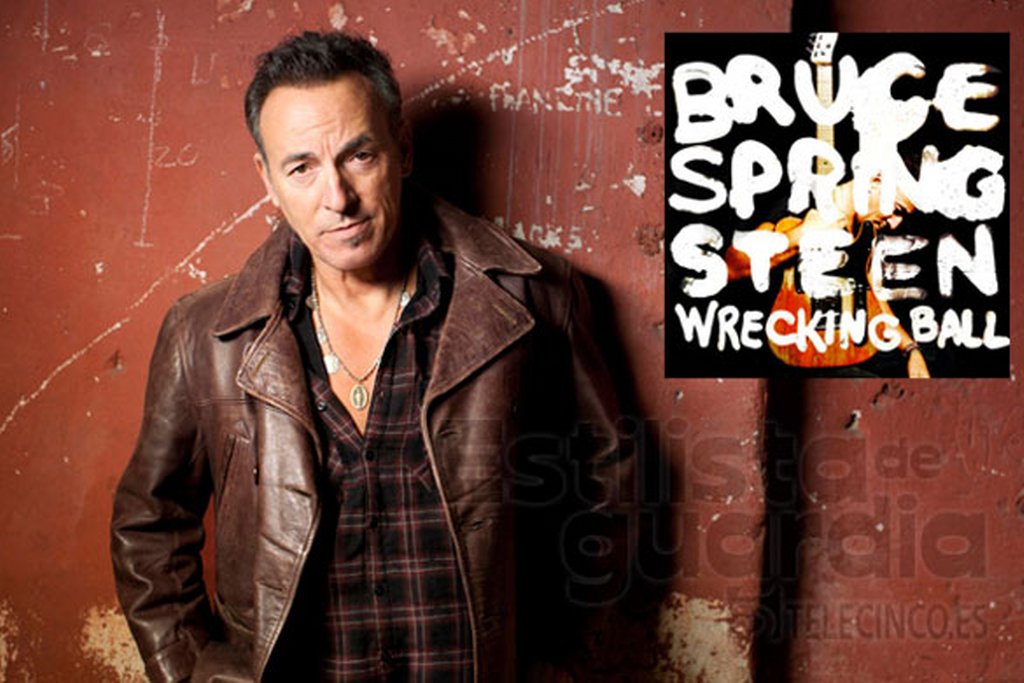
2. **Initial Struggle and Formative Albums (1972–1974)**As Springsteen refined his distinctive musical and lyrical style, he transitioned through several bands between 1971 and 1972, including Dr. Zoom & the Sonic Boom, the Sundance Blues Band, and eventually the Bruce Springsteen Band. During this period, his songwriting ability became increasingly evident, characterized by a narrative richness that, as his future record label would later describe, contained “more words in some individual songs than other artists had in whole albums.” This lyrical density and storytelling prowess began to attract key figures.
These evolving skills ultimately captured the attention of influential managers Mike Appel and Jim Cretecos, who recognized his unique potential. It was through their advocacy that Springsteen was introduced to John Hammond, a legendary talent scout at Columbia Records, renowned for having signed Bob Dylan a decade prior. This connection led to a pivotal audition for Hammond in May 1972, a moment that would fundamentally alter the trajectory of Springsteen’s career.
In October 1972, Springsteen assembled a new band for the recording of his debut album, “Greetings from Asbury Park, N.J.” This ensemble would eventually come to be known as the E Street Band, though the official moniker was not adopted until September 1974. It was also during this foundational period that Springsteen acquired his enduring nickname, “the Boss,” reportedly for his habit of collecting and distributing the band’s nightly pay, and also from games of Monopoly with fellow Jersey Shore musicians.
“Greetings from Asbury Park, N.J.” was released in January 1973 under the Columbia Records label, promptly establishing Springsteen as a critical favorite. The album’s lyrical poeticism and folk rock-rooted music, exemplified by tracks such as “Blinded by the Light” and “For You,” inevitably drew comparisons to Bob Dylan. Peter Knobler, editor of Crawdaddy magazine, lauded Springsteen in a March 1973 profile, remarking, “He sings with a freshness and urgency I haven’t heard since I was rocked by ‘Like a Rolling Stone’.” Crawdaddy proved to be an early and ardent champion, profiling him three times throughout the 1970s and even receiving a private performance from Springsteen and the E Street Band at their 10th Anniversary Party in 1976.
Building on this foundation, Springsteen released his second album, “The Wild, the Innocent & the E Street Shuffle,” in November 1973, merely eleven months after his debut. Like its predecessor, this album garnered critical acclaim but achieved only limited commercial success at the time. The songs on “The Wild, the Innocent & the E Street Shuffle” expanded in form and scope, with the E Street Band contributing a less folksy, more rhythm and blues-infused sound. The lyrics increasingly romanticized teenage street life, giving rise to fan favorites like “4th of July, Asbury Park (Sandy)” and “Incident on 57th Street.” “Rosalita (Come Out Tonight)” emerged as one of Springsteen’s most beloved concert anthems, having been played live 809 times as of June 2020, ranking as his ninth-most performed song.
Read more about: The Enduring Story of a Legend: Bruce Springsteen’s Path from Asbury Park to Global Icon
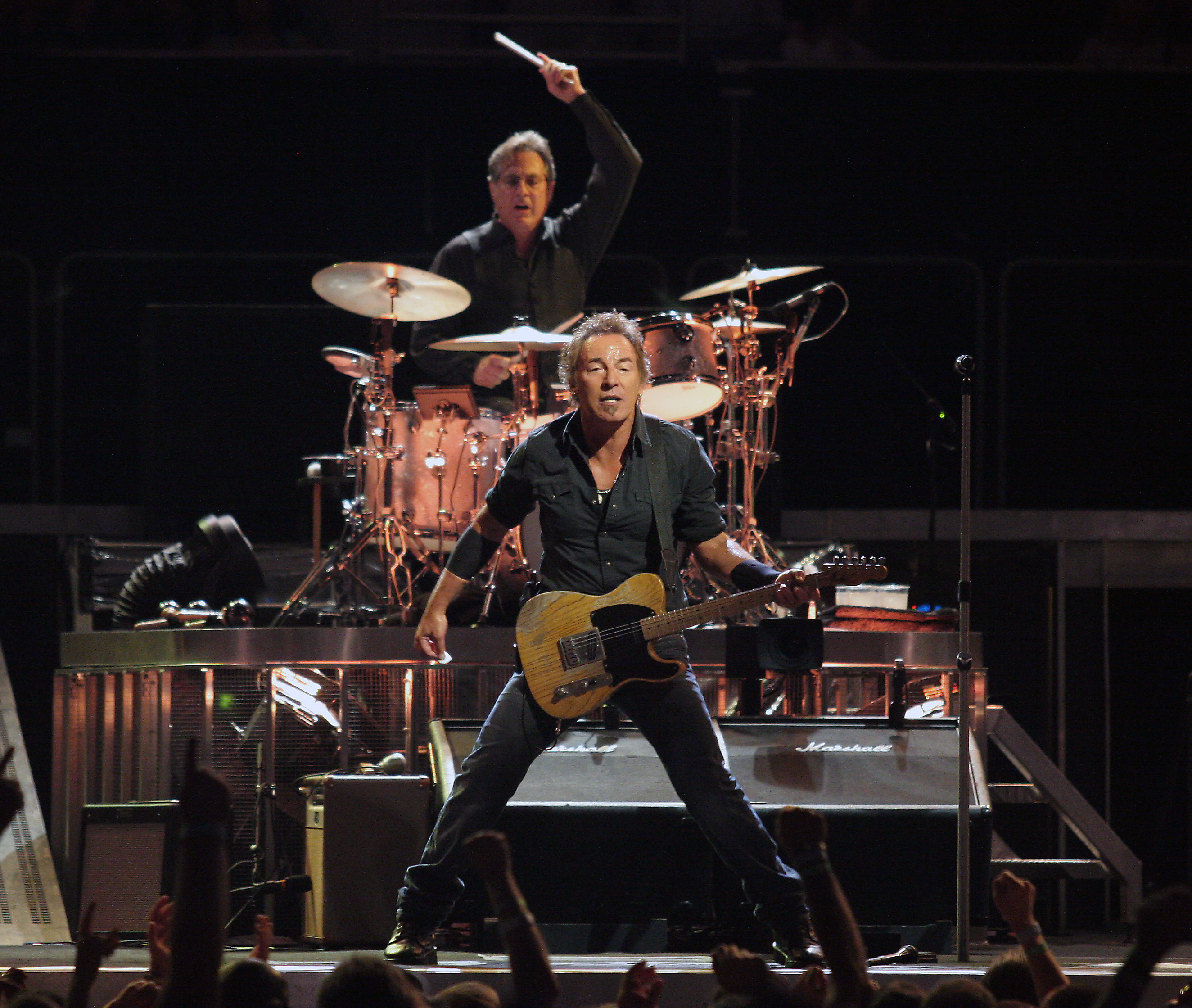
3. **The Breakthrough: “Born to Run” and Ascendant Stardom (1975)**A pivotal moment in Bruce Springsteen’s burgeoning career arrived in 1974, not through a record sale, but through a profound declaration by music critic Jon Landau. After witnessing Springsteen’s electrifying performance at the Harvard Square Theater, Landau famously proclaimed, “I saw rock and roll future, and its name is Bruce Springsteen.” This encounter was more than just a critical endorsement; Landau and Springsteen had met in Boston a month prior and quickly forged a close friendship, with Landau subsequently stepping in as co-producer for Springsteen’s next album, “Born to Run,” in February 1975. This album was conceived as Springsteen’s last-ditch effort to create a commercially viable record, carrying immense pressure.
The ambition for “Born to Run” was immense, with Springsteen striving for a “Wall of Sound” production reminiscent of Phil Spector’s work. This pursuit led to an exceptionally arduous and protracted recording process, which stretched over 14 months. A significant portion of this time—a grueling six months—was dedicated solely to perfecting the title track itself. The meticulous, almost obsessive, attention to detail and sound design characterized the entire production, as Springsteen sought to capture the elusive “sounds in [his] head” that he struggled to articulate to others in the studio.
During these intensive sessions, the E Street Band experienced significant personnel changes. David Sancious and Ernest Carter departed after the completion of “Born to Run,” making way for the arrival of Roy Bittan on piano and Max Weinberg on drums. These new members would become integral to the band’s iconic sound. Springsteen’s creative struggles were also evident in moments like the recording of “Tenth Avenue Freeze-Out,” where Steven Van Zandt conceived the horn parts on the spot after Springsteen and Bittan faced difficulty in writing suitable arrangements, leading to Van Zandt’s official integration into the E Street Band shortly thereafter.
The recording and mixing phases of “Born to Run” were fraught with tension and frustration for Springsteen. He battled with anger and a relentless pursuit of perfection, often feeling unable to adequately convey his sonic vision. The album’s mixing process extended right up to July 20, 1975, just before a concert tour was set to commence. So intense was his dissatisfaction with the initial acetate pressing that he famously threw it into a hotel swimming pool, even contemplating scrapping the entire project and re-recording it live before Landau intervened. Multiple mixes were sent to him on the road, all of which he rejected until finally approving the definitive version in August.
Upon its release in August 1975, “Born to Run” proved to be the pivotal breakthrough album, catapulting Bruce Springsteen to worldwide fame. The record peaked at an impressive No. 3 on the Billboard Top LPs & Tape chart and eventually achieved seven times platinum status in the U.S., a remarkable commercial success. Its two singles, “Born to Run” and “Tenth Avenue Freeze-Out,” also found success on the Billboard Hot 100, reaching No. 23 and No. 83, respectively. Author Louis Masur posited that the album’s success resonated deeply with a generation of late teenagers grappling with the fears of growing old, solidifying its place as a generational anthem.
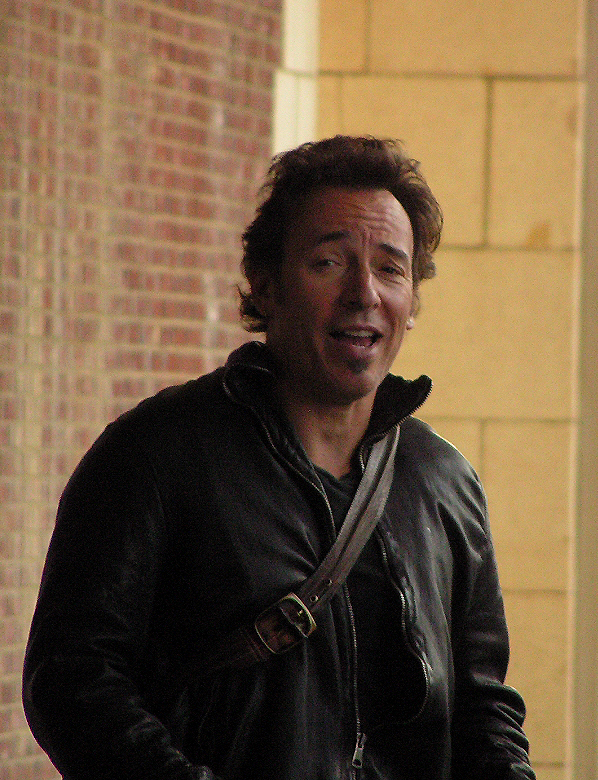
4. **Navigating Fame and Creative Triumphs (1975–1983) – Part 1: Post-Born to Run**The monumental success of “Born to Run” in 1975 launched Bruce Springsteen into an unprecedented level of public visibility. In October of that year, he made history by appearing on the covers of both Newsweek and Time magazines in the same week, a feat no artist had accomplished before. This simultaneous cover exposure signaled his emergence as a major cultural force, placing him firmly in the national spotlight and cementing his image as “the future of rock and roll.”
However, this sudden and intense media scrutiny quickly led to a backlash. Critics and observers began questioning whether Springsteen’s ascent was genuine or merely the result of an aggressive record company promotional campaign. This skepticism was particularly unsettling for Springsteen, who found the newfound attention deeply uncomfortable. His discomfort was so profound that upon the E Street Band’s arrival in London for their first concerts outside North America, he personally tore down promotional posters in the lobby of the Hammersmith Odeon, a stark demonstration of his aversion to manufactured hype.
Adding to the complexities of this period, Springsteen became embroiled in a protracted legal battle with his former manager, Mike Appel. This dispute effectively kept him out of the recording studio for nearly a year, a significant impediment to his creative momentum. Despite this setback, Springsteen demonstrated remarkable resilience and commitment to his band, choosing to keep the E Street Band together through extensive touring across the U.S. and continuing to write new material, ensuring their cohesion during an uncertain time.
The legal entanglement with Appel finally reached a settlement in May 1977, allowing Springsteen to return to the studio. The subsequent nine-month recording sessions with the E Street Band were highly productive, yielding the acclaimed album “Darkness on the Edge of Town.” This record marked a distinct stylistic shift, intentionally stripping away the “Wall of Sound” production gloss of “Born to Run” in favor of a rawer, harder rock sound. Its lyrical themes focused on the struggles of ill-fortuned individuals who courageously fought back against overwhelming odds, reflecting a darker, more introspective side of Springsteen’s songwriting.
“Darkness on the Edge of Town,” released in June 1978, sold fewer copies initially than its predecessor, “Born to Run.” However, it demonstrated remarkable staying power, remaining on the Billboard chart for an impressive 167 weeks and eventually selling three million copies in the U.S. The album produced three singles—”Prove It All Night,” “Badlands,” and “The Promised Land”—which performed modestly. The accompanying Darkness Tour was Springsteen’s largest to date, featuring marathon shows that often exceeded three hours in length. Critics, such as the staff of Ultimate Classic Rock, noted that this tour solidified Springsteen and the E Street Band’s reputation as “one of the most exciting live acts in rock ‘n’ roll,” underscoring their legendary performance capabilities.
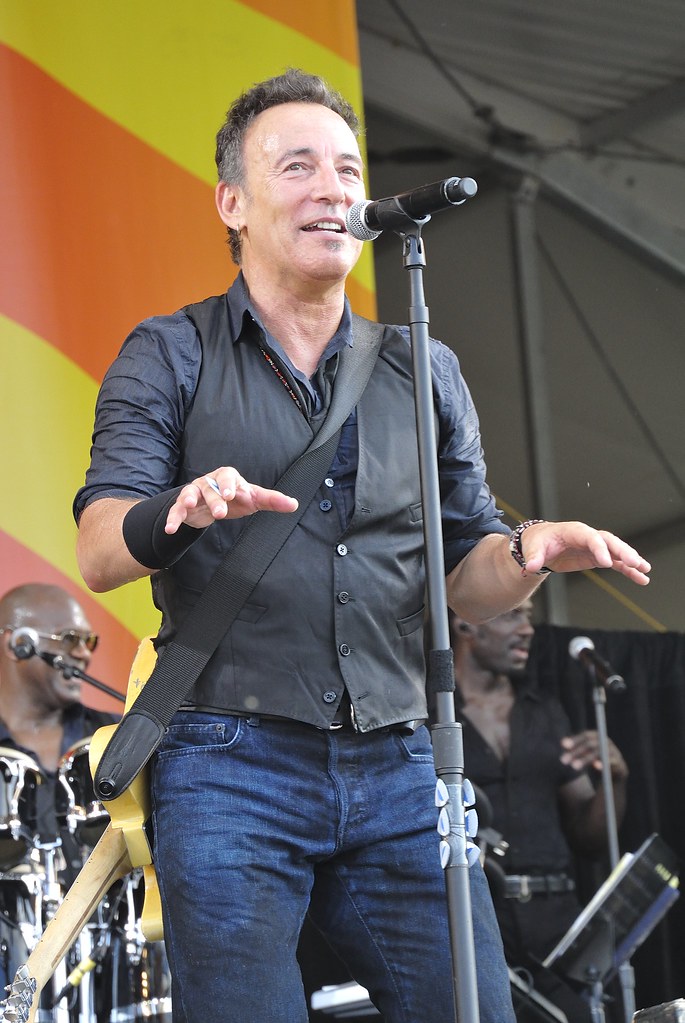
5. **Navigating Fame and Creative Triumphs (1975–1983) – Part 2: Songwriting and New Directions**By the late 1970s, Bruce Springsteen had not only established himself as a formidable performer but also cultivated a reputation as a highly sought-after songwriter whose compositions could provide significant hits for other artists. This period saw several prominent acts achieve commercial success with his material, highlighting the breadth and versatility of his lyrical and melodic craftsmanship. It underscored a recognition of his genius beyond his own recordings.
One of the most notable examples was Manfred Mann’s Earth Band, which achieved a U.S. No. 1 pop hit in early 1977 with a heavily rearranged version of “Blinded by the Light” from Springsteen’s debut album, “Greetings from Asbury Park, N.J.” Patti Smith also found considerable success in 1978 with her version of Springsteen’s then-unreleased “Because the Night,” featuring her revised lyrics, which climbed to No. 13 on the charts. Furthermore, The Pointer Sisters scored a No. 2 hit in 1979 with “Fire,” another unreleased Springsteen composition. Between 1976 and 1978, Springsteen supplied four compositions, including “The Fever” and “Hearts of Stone,” to Southside Johnny and the Asbury Jukes, and collaborated on four additional tracks with Steven Van Zandt, who produced their first three albums.
Springsteen’s burgeoning social consciousness also began to manifest more overtly in his career during this era. In September 1979, he and the E Street Band joined the Musicians United for Safe Energy (MUSE) anti-nuclear power collective for two nights at Madison Square Garden. These concerts featured abbreviated sets and marked the premiere of two songs from his forthcoming album. The subsequent “No Nukes” live album and the documentary film released the following summer provided the first official recordings and footage of Springsteen’s celebrated live performances, signifying his initial tentative foray into political involvement and advocacy.
The recording sessions for Springsteen’s fifth studio album, “The River,” were extensive, spanning an impressive 18 months. Released in October 1980, this 20-track double album was a deliberate attempt to capture the raw energy and vibrant feel of the E Street Band’s live performances on stage. It presented a compelling dichotomy, featuring a dynamic mix of exuberant party songs designed for collective celebration alongside deeply introspective ballads that delved into personal reflection and quieter emotional landscapes.
“The River” quickly became Springsteen’s biggest and fastest-selling album to date, successfully topping the U.S. Billboard chart. Its commercial triumph was further solidified by the single “Hungry Heart,” which became his first top ten hit as a performer, reaching number five. “Fade Away” also achieved notable chart success, peaking at No. 20. Yet, even amidst this commercial peak, “The River” foreshadowed a dramatic artistic shift. Several songs hinted at the direction of his next record, the profoundly minimalist and folk-inspired solo effort “Nebraska,” released in September 1982. This album, recorded as raw demo recordings at his home, marked a stark departure, chronicling the dark hardships faced by blue-collar workers and bleak tales of criminals, cops, and gang wars, surprising critics who praised it as a brave artistic statement despite its minimal sales compared to his previous works, still reaching No. 3 on the Billboard chart.
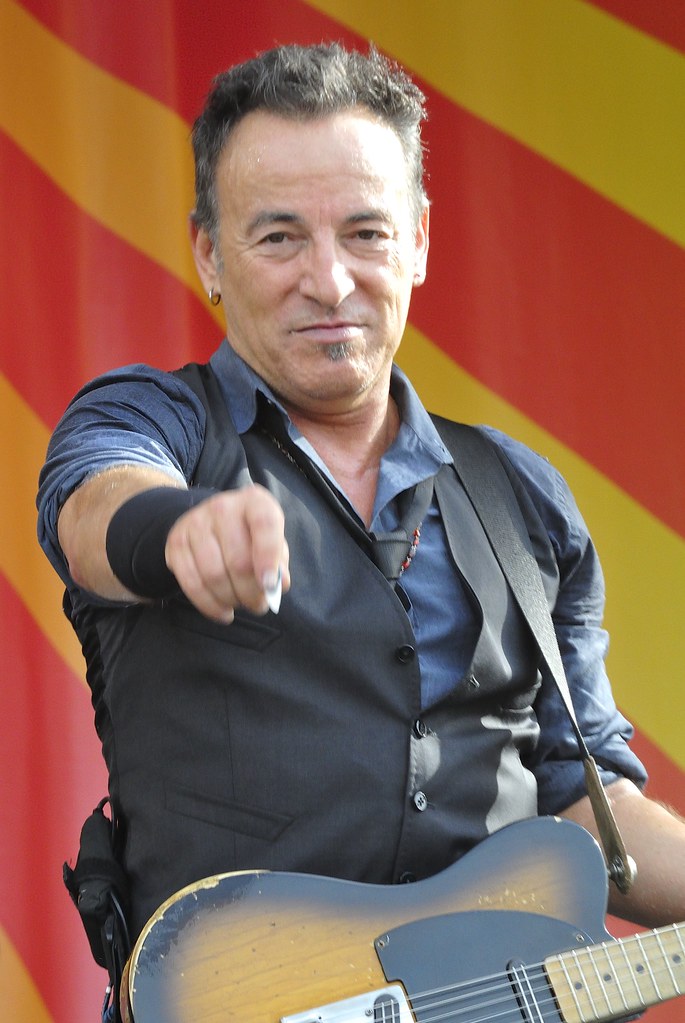
6. **Born in the U.S.A. and Cultural Phenomenon (1984–1986)**The release of “Born in the U.S.A.” in 1984 marked a transformative epoch for Bruce Springsteen, propelling him into unprecedented global superstardom. This album’s commercial impact was immense, selling 30 million copies worldwide and achieving distinction as one of the best-selling albums of all time. Its phenomenal reach was underscored by seven top-ten singles, firmly embedding Springsteen into the global popular culture landscape.
The album’s title track, “Born in the U.S.A.,” became an iconic anthem, frequently subject to misinterpretation despite its clear lyrical intent. Serving as a poignant commentary on the struggles of Vietnam veterans, its anthemic melody often led to its widespread misreading as purely patriotic, even by political figures. Springsteen addressed this during the 1984 presidential campaign when, after President Ronald Reagan referenced his “message of hope,” Springsteen clarified his socioeconomic critiques by performing “Johnny 99,” a stark depiction of industrial decline.
Beyond the title track, “Born in the U.S.A.” produced a string of major hits, including “Dancing in the Dark,” which peaked at No. 2 on the Billboard singles chart. Its memorable music video featured a young Courteney Cox dancing with Springsteen, significantly advancing her career. Springsteen also penned “Cover Me” for Donna Summer, though his record company retained it, and crafted “Protection” specifically for Summer.
The mid-1980s represented the peak of Springsteen’s popular culture visibility, aided by Arthur Baker’s dance mixes. From June 15 to August 10, 1985, all seven of his albums simultaneously appeared on the UK Albums Chart, a historic first for any artist. This period culminated with the late-1986 release of *Live/1975–85*, a box set that debuted at No. 1 on the U.S. album charts, becoming one of the most commercially successful live albums ever, with 13 million units sold in the U.S.
Read more about: The Enduring Story of a Legend: Bruce Springsteen’s Path from Asbury Park to Global Icon
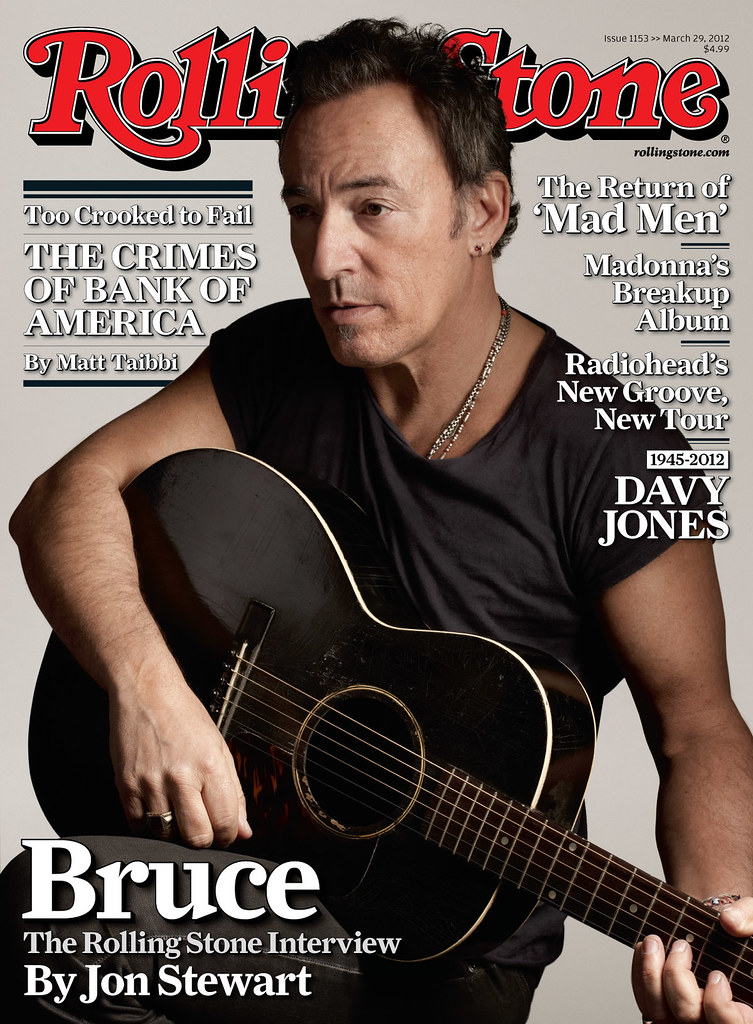
7. **Tunnel of Love and Global Activism (1987–1991)**Following the immense commercial success of “Born in the U.S.A.,” Bruce Springsteen released “Tunnel of Love” in October 1987, signaling a shift towards a more introspective and subdued artistic phase. The album offered a mature reflection on the multifaceted nature of love, consciously minimizing the full E Street Band sound for a more personal musical expression. Despite its less overtly commercial sound, “Tunnel of Love” achieved considerable commercial success, reaching No. 1 on the Billboard 200 chart.
A seminal event of this period was Springsteen’s concert in East Germany on July 19, 1988, which drew an estimated 300,000 spectators. Journalist Erik Kirschbaum described it as “the most important rock concert ever, anywhere.” Intended by the Socialist Unity Party’s youth wing to appease young East Germans desiring Western culture, the concert inadvertently fostered significant dissent.
Kirschbaum’s analysis suggests the concert’s success galvanized opposition to the East German regime. By exposing such a vast audience to a powerful symbol of Western freedom, the performance is believed to have significantly contributed to the burgeoning discontent that ultimately led to the fall of the Berlin Wall the following year, making Springsteen’s music a pivotal moment of cultural and political empowerment.
Further solidifying his commitment to social justice, Springsteen headlined the worldwide Human Rights Now! tour for Amnesty International later in 1988. This extensive tour amplified messages of human rights globally. However, this period also brought a significant artistic change, as he made the pivotal decision to dissolve the E Street Band in October 1989, concluding an era and opening avenues for new creative explorations.
Read more about: The Enduring Story of a Legend: Bruce Springsteen’s Path from Asbury Park to Global Icon
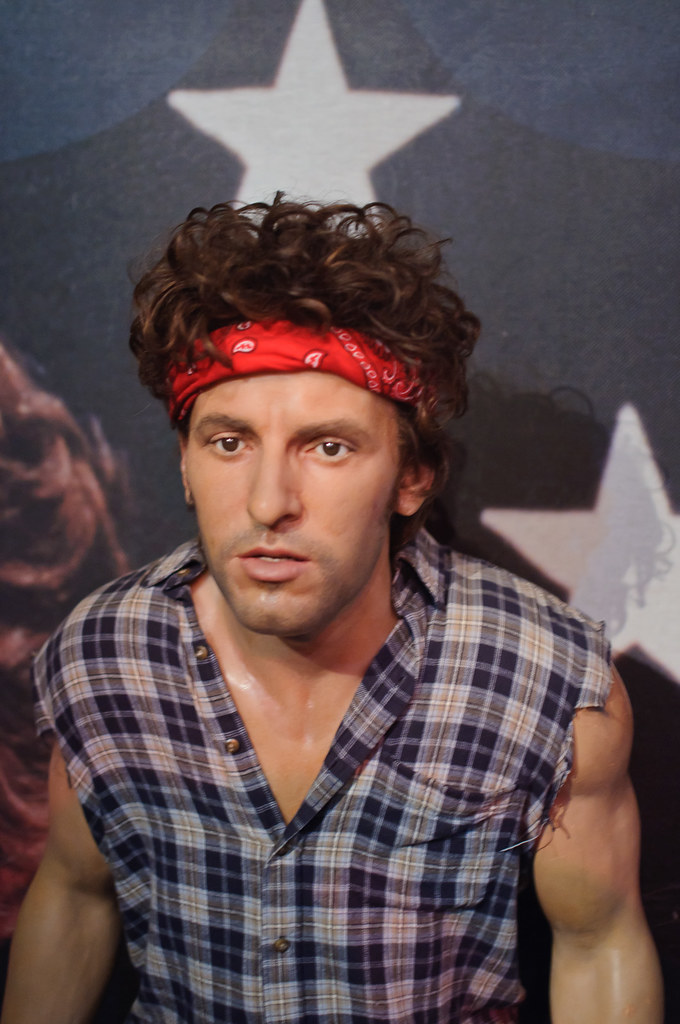
8. **Academy Award, Solo Endeavors, and Re-evaluations (1992–1998)**The early 1990s marked a period of notable artistic transition for Bruce Springsteen, as he pursued solo projects after the E Street Band’s dissolution. In 1992, he simultaneously released “Human Touch” and “Lucky Town,” moves that involved relocating to Los Angeles and collaborating with session musicians. This shift challenged long-time fans, leading to mixed reception, further exacerbated by a poorly received electric band appearance on the acoustic “MTV Unplugged” program.
Despite these mixed artistic responses, Springsteen achieved significant critical acclaim in 1994, winning an Academy Award for his song “Streets of Philadelphia.” Featured on the soundtrack for the film *Philadelphia*, the track addressed themes of AIDS discrimination. Its accompanying video uniquely showcased Springsteen’s actual vocal performance, recorded with a hidden microphone over a prerecorded instrumental track, emphasizing raw authenticity.
In 1995, the E Street Band temporarily reunited for new songs on his *Greatest Hits* album, chronicled in *Blood Brothers*, and a memorable show at Tramps. Subsequently, Springsteen released his second folk album, “The Ghost of Tom Joad,” deeply inspired by Steinbeck’s *The Grapes of Wrath*. Though less universally acclaimed than “Nebraska” due to its minimalist melody and overt political themes, critics praised its effort to give voice to marginalized individuals.
The album was supported by a worldwide, small-venue solo acoustic “Ghost of Tom Joad Tour.” Following this tour, Springsteen moved with his family from California back to New Jersey. In 1998, he released *Tracks*, a four-disc box set of outtakes. He later candidly described the 1990s as a “lost period,” admitting, “I didn’t do a lot of work.”
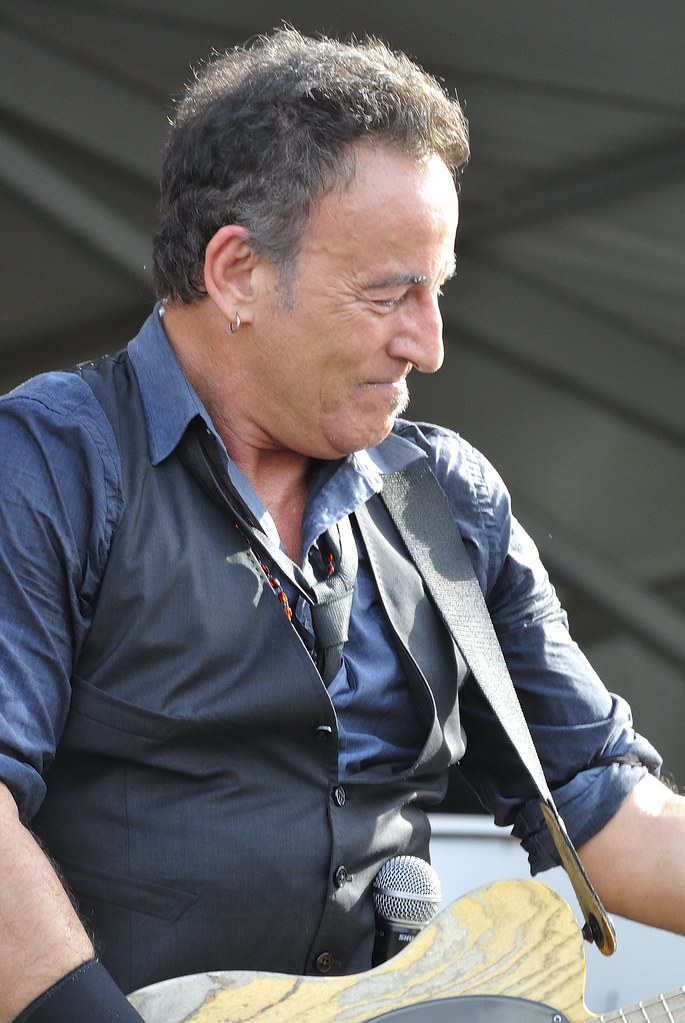
9. **Reunion, Reflection, and Resurgence (1999–2011)**The turn of the millennium heralded a powerful resurgence for Bruce Springsteen, beginning with his 1999 induction into the Rock and Roll Hall of Fame and the highly anticipated E Street Band Reunion Tour. This tour featured record-setting, sold-out engagements and introduced the controversial song, “American Skin (41 Shots),” addressing the police shooting of Amadou Diallo.
In 2002, “The Rising,” his first studio album with the full E Street Band in 18 years, reflected on the September 11 attacks. It achieved critical and popular success, becoming his best-selling new material in 15 years, earning a Grammy for Best Rock Album in 2003, and leading to an unprecedented 10-night residency at Giants Stadium. He participated in the “Vote for Change” tour in 2004.
Springsteen diversified with the solo acoustic “Devils & Dust” (2005), akin to “Nebraska,” addressing the Iraq War and topping charts internationally. This was followed by “We Shall Overcome: The Seeger Sessions” (2006), an American roots project with an 18-strong Sessions Band, popular in Europe. His 2007 album, “Magic,” a return to the full E Street Band sound, debuted at No. 1 globally, supporting the final tour for Danny Federici.
From 2008 to 2011, Springsteen actively supported Barack Obama’s 2008 campaign, performing at the Inaugural Celebration. He received a Golden Globe for “The Wrestler” (2009) and headlined the Super Bowl XLIII halftime show. He received the Kennedy Center Honors in 2009, and the decade concluded with *Rolling Stone* naming him an Artist of the Decade, preceding the passing of Clarence Clemons in 2011.
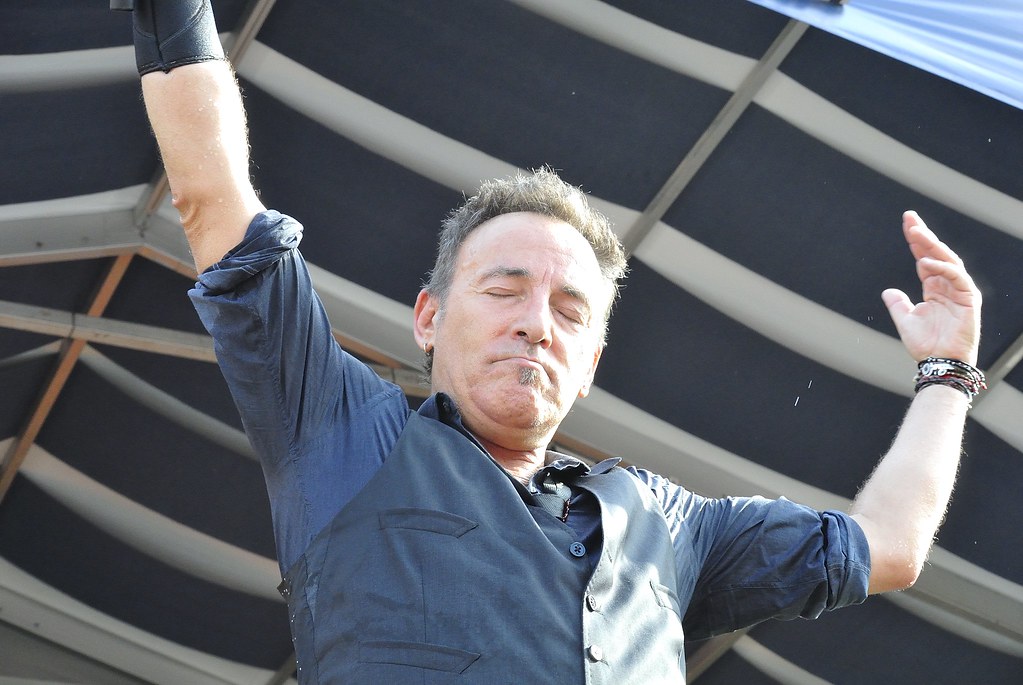
10. **Autobiography, Broadway, and Recent Works (2012–2021)**The 2010s saw Bruce Springsteen continue his prolific output and profound career reflections. His 17th studio album, “Wrecking Ball” (2012), became his tenth No. 1 album in the U.S., tying Elvis Presley. The “Wrecking Ball Tour” featured his longest concert to date in Helsinki, over four hours, and earned “Top Draw” status. He actively campaigned for President Barack Obama’s re-election in 2012, with the album earning Grammy nominations and declared *Rolling Stone*’s number one album of 2012.
In July 2013, the documentary *Springsteen & I* was globally released. His eighteenth studio album, “High Hopes” (2014), featured covers and outtakes, becoming his eleventh No. 1 in the U.S. and tenth in the UK. Springsteen also made his acting debut in *Lilyhammer*. Celebrations for *The River*’s 35th anniversary in 2015 included *The Ties That Bind: The River Collection* box set, and he made his first *Saturday Night Live* appearance since 2002.
The “River Tour 2016” featured in-sequence performances of “The River” album, and Springsteen boycotted North Carolina’s anti-transgender bathroom bill. September 2016 saw his autobiography, *Born to Run*, top The New York Times Best Sellers List. The “River Tour 2016” became the top-grossing worldwide tour. Springsteen continued political activism, supporting Hillary Clinton in 2016 and receiving the Presidential Medal of Freedom from Barack Obama. He and Patti Scialfa performed for the Obamas at the White House in 2017.
A distinctive chapter began with “Springsteen on Broadway,” an acclaimed run from 2017-2018, featuring readings from his autobiography and acoustic music, earning him a Special Tony Award. The live album achieved global top 10 status. His nineteenth studio album, “Western Stars” (2019), showcased a cinematic sound, followed by a co-directed film. In May 2020, he appeared remotely at a livestream concert by the Dropkick Murphys during the pandemic.
His twentieth studio album, “Letter to You” (2020), a powerful return to E Street Band rock, reached No. 2 in the U.S., making him the first artist with a top-five album in six consecutive decades. The E Street Band performed on *Saturday Night Live* in December 2020, solidifying his unparalleled longevity and artistic vitality up to 2021.
Bruce Springsteen’s monumental career stands as an enduring testament to artistic integrity, relentless evolution, and an unbreakable bond with the human experience. From the raw energy of his early Jersey Shore days to the global anthems and intimate Broadway reflections, “The Boss” has consistently chronicled the dreams, struggles, and triumphs of ordinary people with extraordinary passion. His legacy is etched not merely in millions of albums sold or countless awards garnered, but in the profound connection he forges, show after show, song after song, continuing to be a resonant voice of hope, resilience, and unwavering authenticity for generations across the world.


